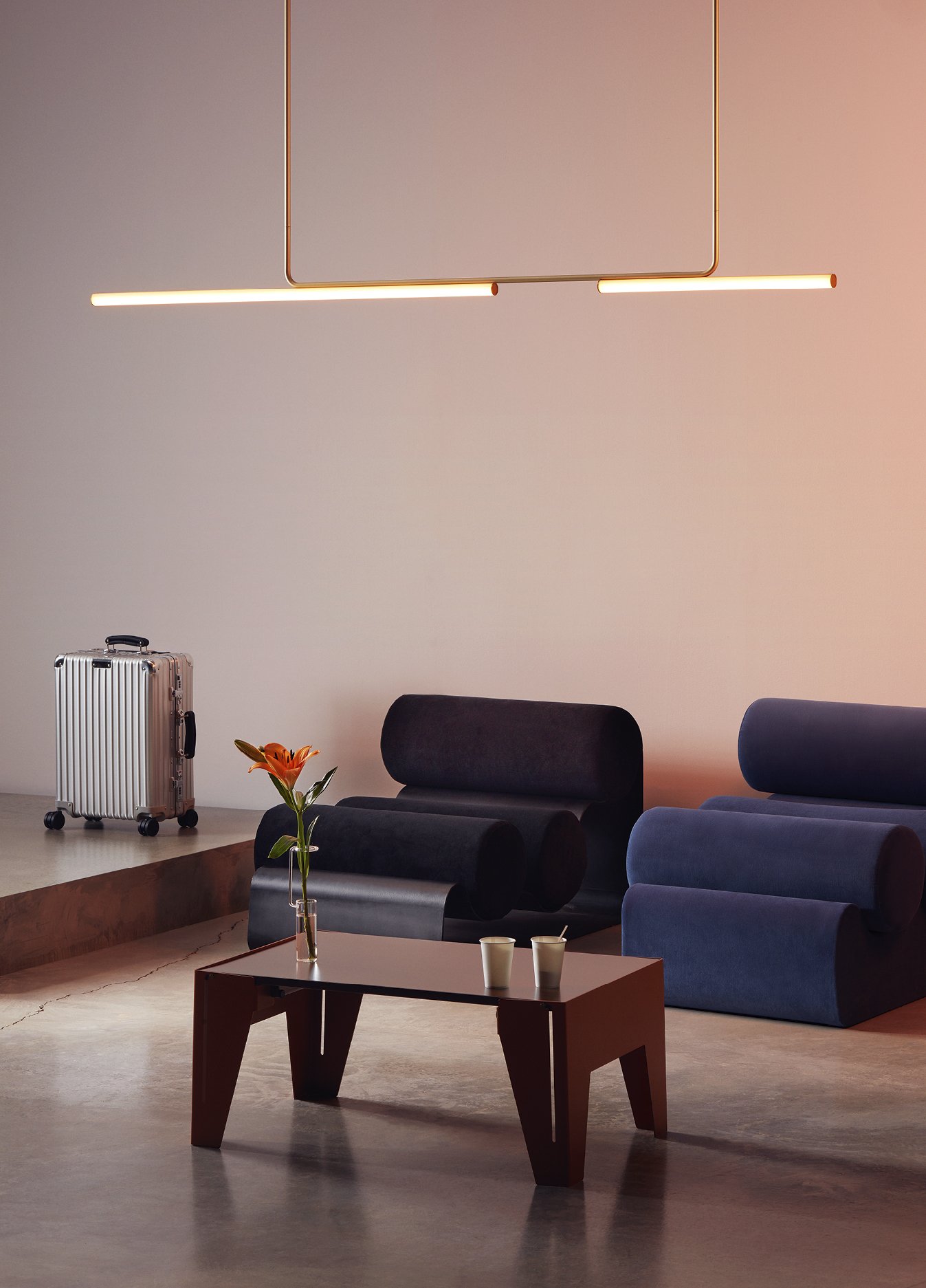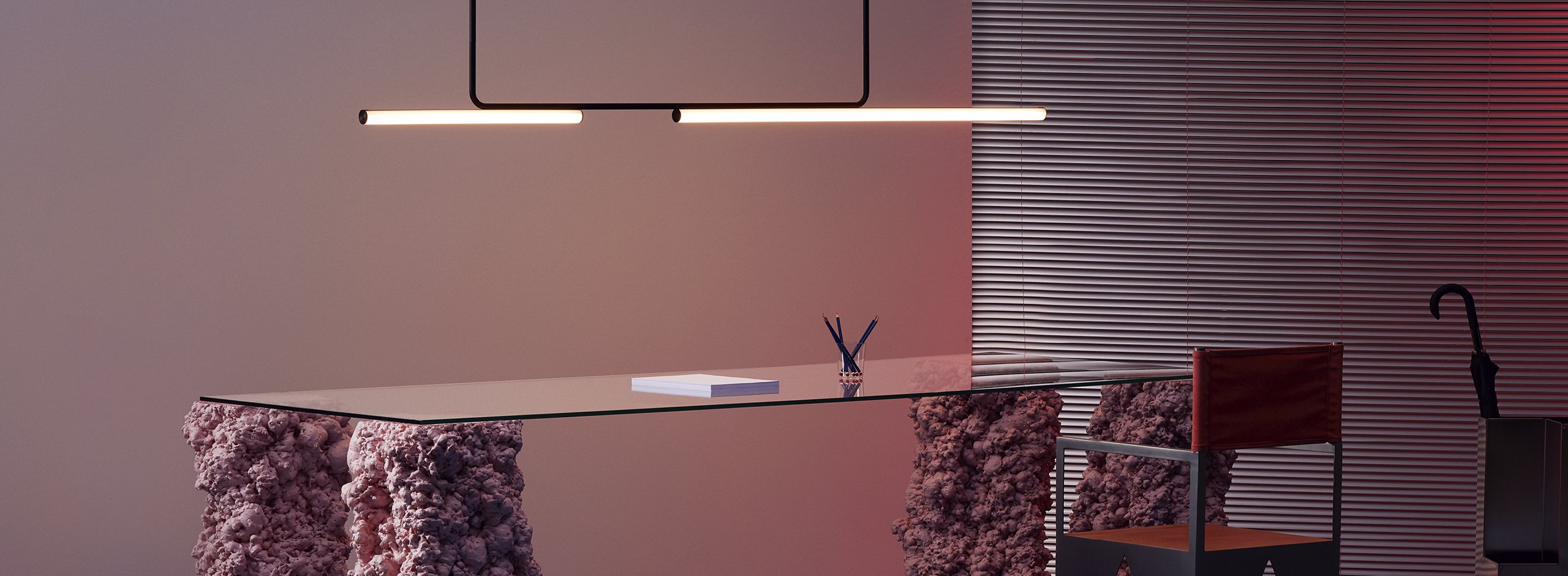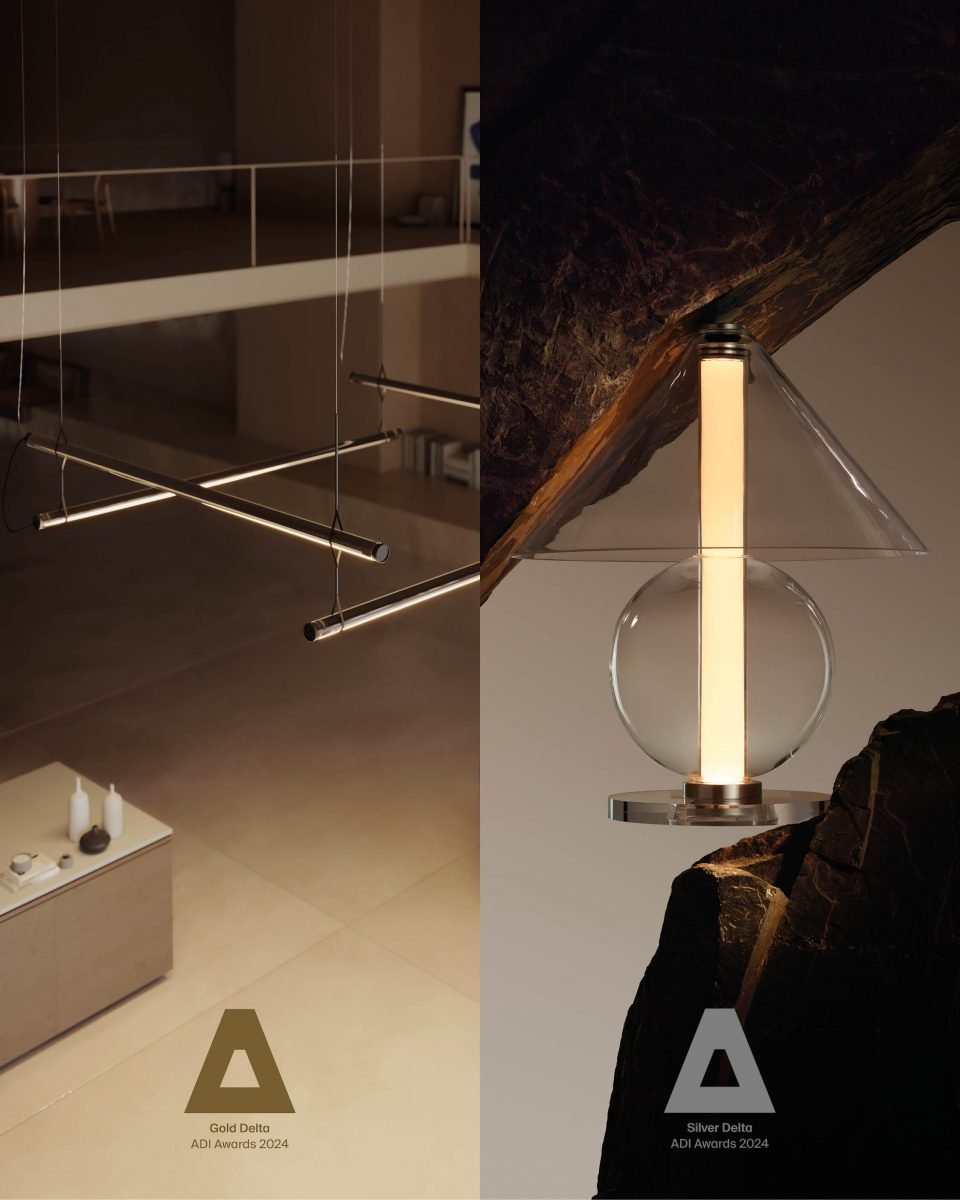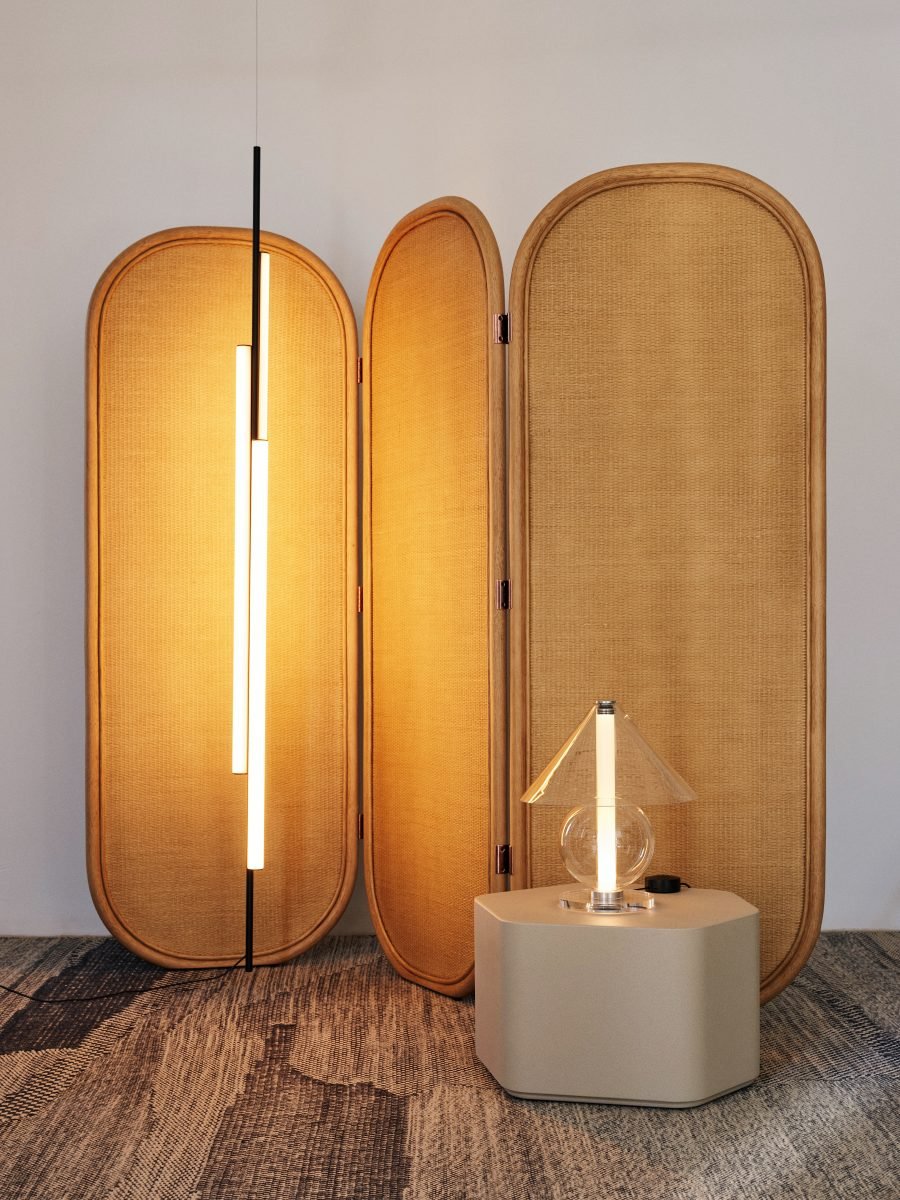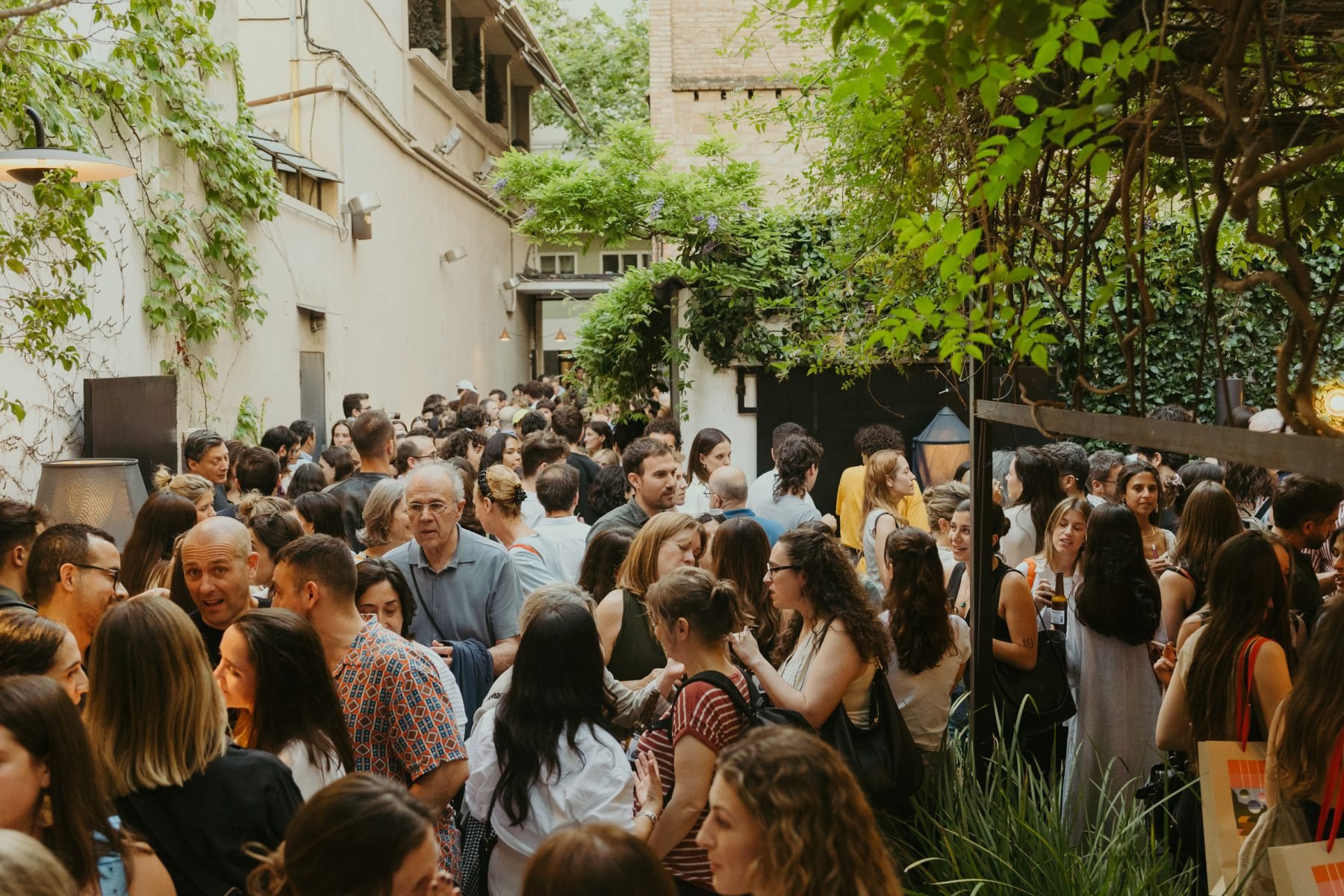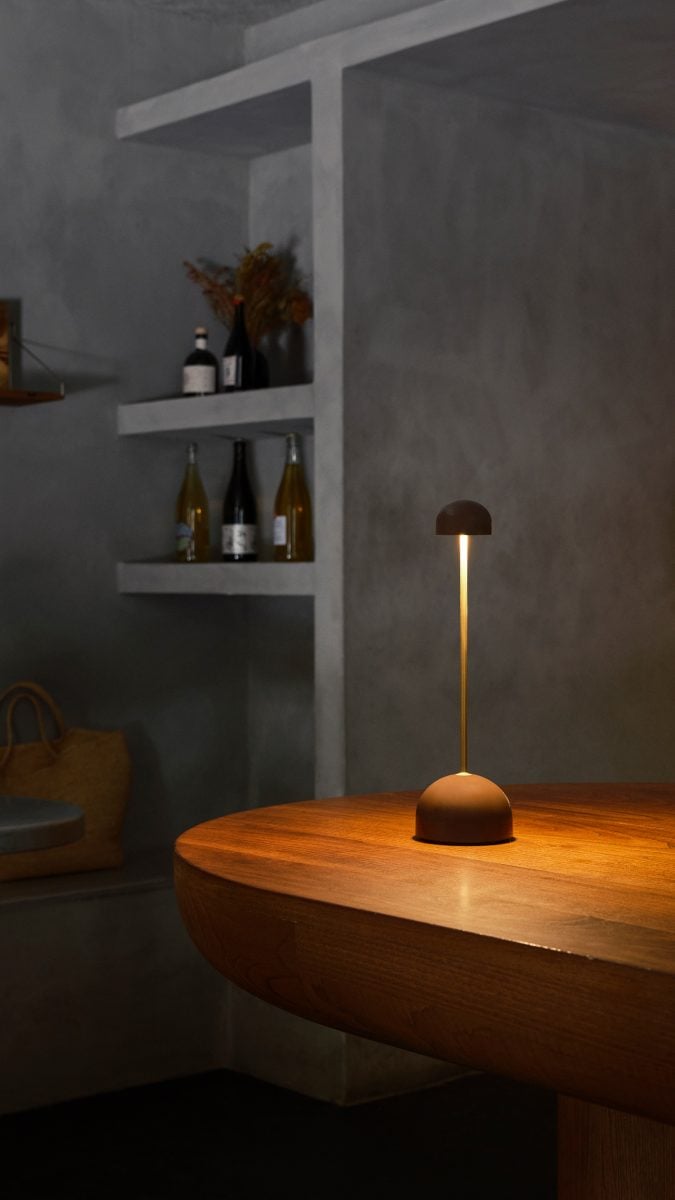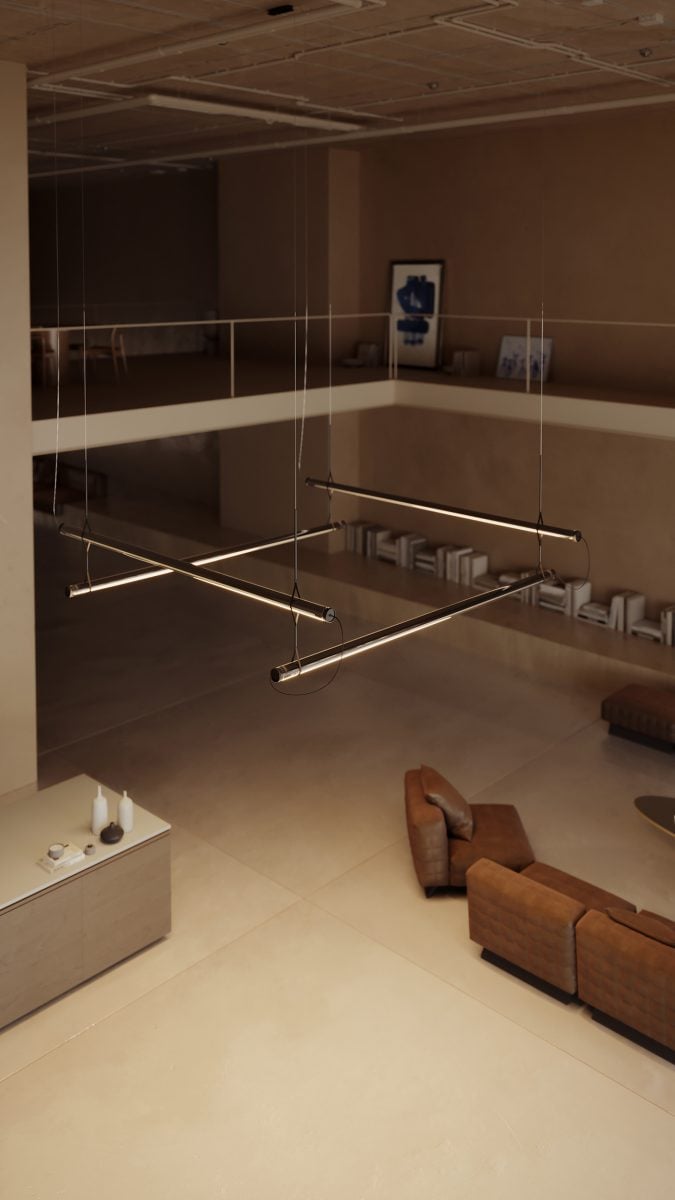Ciszak Dalmas, experimenting every day
Alberto Gobbino Ciszak and Andrea Caruso Dalmas are “designers without labels”. These two childhood friends from Turin (Italy) studied industrial design together and opened their office, Ciszak Dalmas, in Madrid in 2009. They began their career in Spain with La Clínica Design, a furniture reuse project that made them famous (and is still ongoing), orienting their path from the beginning towards simple and sustainable design. Today, Ciszak Dalmas is looking to go a step further and design buildings, in collaboration with architect Matteo Ferrari. In 2017, Alberto and Andrea designed the interior of the Ambrosia multi-brand boutique, for which they created an eponymous suspension lamp, which speaks from geometry and adaptability. Ambrosía is a segment of light capable of extending and adopting different sizes, thus offering numerous possibilities. Marset has edited it and it is already part of its new collection.
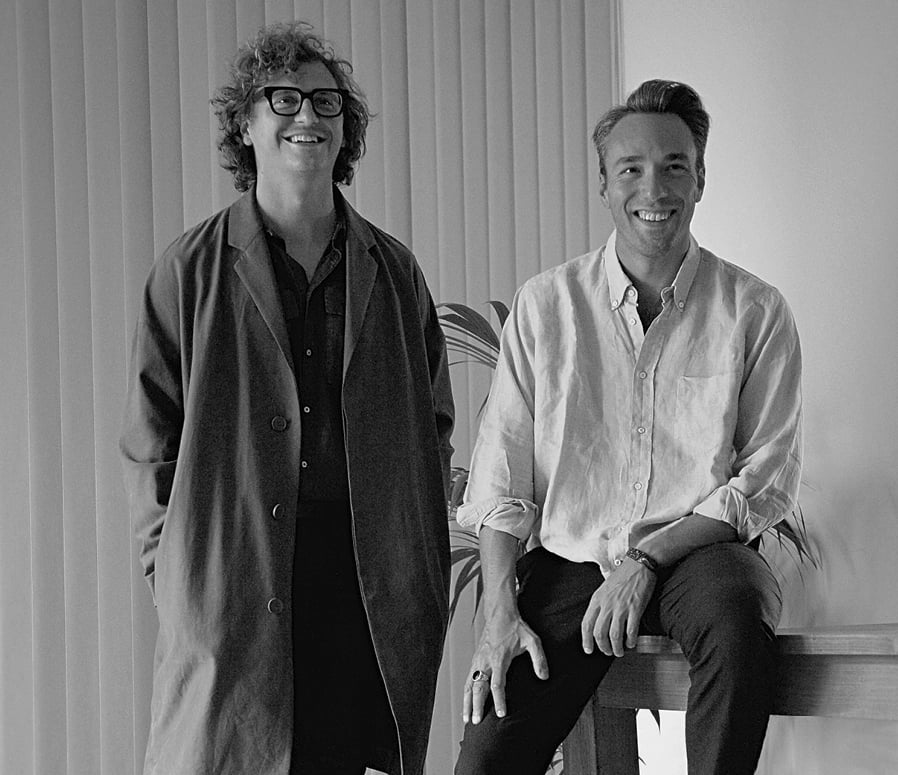
What is your background in design?
We studied at the Polytechnic of Turin and then we did internships: Alberto with Inga Sempé in Paris, and me at Artemide and Pininfarina, all product design studios. We were born as product designers, as industrial designers. We were in Turin until we were in our early twenties, looking for a master’s degree, and we made a trip to Madrid, where we found a master’s degree at IED that interested us a lot. That master’s degree led us to travel around Europe and get in touch with the working world. It was there that we fell in love with the freer, not so industrial design: we got to know the design of spaces, in ephemeral experiences, also graphic design… we opened up the field, we became ‘designers’, without any other labels.
And the studio was born?
In 2009 we set up the studio and started to do a bit of everything: photography, video, communication… at the same time, we launched a small furniture brand called La Clinica Design, from which we design furniture with artisans from Madrid. We made a communication effort so that those prototypes would end up looking almost like a brand, and from there we received an avalanche of definitions for the products, but we were not really ready to have a brand. We were very young and didn’t really know what to do with it, but the collection helped us to make ourselves known and get our first customers. From there, we made the leap to interior design: the first big project was for Max & Co. who asked us to design the furniture for the entire store at an international level. That first experience introduced us to retail design, which today is one of the most important legs of the studio. Later we designed for Malababa, Ambrosia, and also for Zara. We traveled to China for a year and there we made stores for the Only brand. The most recent projects are Gisela, in Malaga, and Hoff, here in Madrid.
What is design for you? What fascinates you about your work?
Design is a complex social discipline that should improve the quality of life of all people and help the environment. Until this is achieved – we are far away – there will be plenty of opportunities for all designers. We are fascinated by free research at the material level. We love working with many, many types of materials, and in the studio we have a material library that expands every day. We experiment with small samples, research textures and finishes and then apply them to both spaces and products. In fact, our motto is “experimenting every day”, because a large part of our philosophy is based on experimentation. We make limited editions with artisans, we design curtains, wallpapers, jewelry, ceramic pieces, tapestries, kimonos, lamps… design is very broad and we love it because it is a free and creative discipline, which can be adapted to any field and which solves problems. There is also a very analytical part in design, where you have to have method, monitoring and study. We understand design as something multidisciplinary and holistic, where the final result is only an image of a long process. Perhaps the disciplines where the results are best seen are product design and interior design. Now we are trying to take the leap and do architecture, small buildings, together with our partner, the architect Matteo Ferrari.
Who are your references?
There are several, but we really like Carlo Scarpa. He’s Italian, he’s old, he’s an architect too, and he had a great interest in detail: even when he was doing architecture, he put a lot of effort into taking care of every last detail. We also like Castiglioni, who had a very playful project, a very spontaneous and intuitive work, and worked with artisanal and industrial processes at the same time. They are people who inspire us because, again, you see that behind simplicity there is a lot of culture, a lot of discussion: there is a story behind every object. And, of course, we love the anonymous design that, more than a designer, has an evolution. It represents precisely what we understand design to be: that everyone is a designer, that everyone who takes an object, modifies it, uses it and gives it a twist, is a designer. Objects mutate like language: according to people’s needs. And there are objects that everyone uses, that no one knows who designed them, and yet they are the best. In this line, we are inspired by Enzo Mari, who talked a lot about the ethics of design and how it has to be at the service of people. He criticized the fact that designers dream of being able to sign an object. Castiglioni also said that there are more chairs than asses, and that the designer sometimes forgets that there are needs to be solved.
What about craftsmanship?
Craftsmanship is fundamental. If craftsmen didn’t exist, we wouldn’t have a job. In this respect, we like to think of design as a collective discipline. It differs from art, which is purely individual and serves the market. However, design is at the service of people, it is for everyone, more democratic and inclusive. Enzo Mari said that while the artist works individually and for the elite, the designer works collectively to solve problems for everyone.
Earlier you mentioned that you like to experiment, research and learn about new materials. Do you favor any specific material or materials?
In principle, all natural materials fascinate us because they never have the same finishes and have the ability to surprise, but we are also open to using industrial materials. All materials are generous because they always serve a specific purpose and can be adapted to other applications. In principle, we love all natural materials. But we are always open to industrial materials, which are supposedly second line or for structures, and when you study them you can find that they have an expressiveness that motivates you to use them. All materials are honest, because they always serve a specific purpose and it’s very playful to change their application. But we are fascinated by natural materials because they are objects that have grown on their own! And having come from nature, they never have the same finish, so there is always a part of surprise.
What importance do you give to the value of sustainability in design?
Our first project, La Clínica, was about reuse. Many years ago we practiced “the 3 R’s” – reuse, reduce and recycle – and we made several pieces under that concept, but now this has become a bit old-fashioned. What we are trying to do instead is to directly design the materials with nature. And that’s where a new author we love comes in, Neri Oxman, who does research at MIT. In the search for alternative materials, there is a lot of ground to cover. We are not experts, but we are trying to pursue this line, and we have been producing materials, mainly bioplastics, for a few months now. It’s all a matter of starting to put a limit on the materials that can have a negative impact and replacing them.
Tell me about Ambrosia, why was this lamp born?
It was born from a design project for the Ambrosia store (hence the name), located on Claudio Coello street in Madrid. It is a luxury multi-brand boutique, and our studio completely renovated it, defining the interior architecture, furniture and lighting. Upon entering the store you were greeted by a special piece of furniture, the cash desk, produced by combining various materials such as solid walnut wood and onyx marble, and for this we wanted to design a lamp according to the importance of the furniture.
What inspired you?
The practicality of the linestra products, which in a single object solve all the technical aspects of an LED light, being of a high production simplicity and low cost. We wanted to investigate its use, changing its perception from something technical to something poetic, although Ambrosía is currently produced with a “smarter” technique than the original model: it no longer uses the linestra system we were initially inspired by, but takes advantage of the linear extrusion process to achieve the four different sizes of the collection.
What was the process like?
We explored artisanal techniques that did not require large investments for the production of a single piece. After several tests and prototypes, we came to use the linestra model, a prefabricated LED strip in several standard sizes, easy to install and very affordable. This system allowed us to create a composition “in segments” of a predefined length, solving all the technical aspects such as wiring, transformer and source in one go, which were integrated into a single component. In order to conceal the plastic coupling of the lineestra and thus complete the design of the luminaire, we created a square box welded with brass plates, leaving only the luminous tube in view. It was an exercise in simplicity, combining practicality and aesthetics.
Did you succeed?
The challenge of this lamp is to be invisible: to be integrated into the space and disappear. It doesn’t have to draw attention to itself or eat into the architecture, but integrate into it and highlight it: it should be at the service of it, rather than stealing the limelight.
Have you experienced something special while making this lamp?
Every design has its own process, some are characterized by an explosion of creativity, others by spurts of impulsiveness, others by an attentive and meticulous analysis and development. Ambrosia was different: everything was played around a simple, minimal line -geometrically speaking, a segment- of light. Creating a three-dimensional product from a two-dimensional geometric figure sounds exciting. You could say, for fun with words, that Ambrosia is a dimensional leap from line to volume, from the second to the third dimension.
What would you like customers to think when they see the lamp?
We would like them to appreciate that the lamp is not a finite product, but an open system, capable of extending and going through different proportions: it can be adapted to a specific point, such as above a table or a reception desk, it can extend to follow the direction of a corridor, or multiply to illuminate a larger room. The system adapts to any interior space, you just have to play with the family and create the most suitable composition.
What does Ambrosia bring to the world of design?
A design that is easy to adapt to different environments through an open, accessible and visually clean system. It brings light without decoration. Just light.
